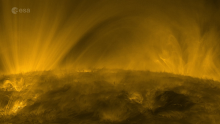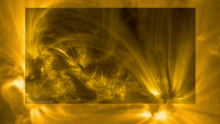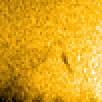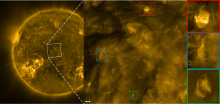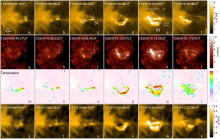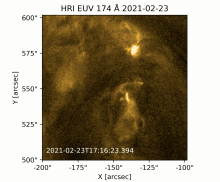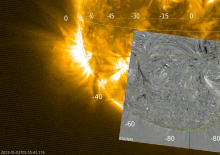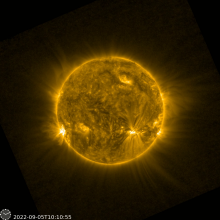The Extreme Ultraviolet Imager (EUI) is part of the remote sensing instrument package of the ESA/NASA Solar Orbiter mission. EUI aims at improving scientific understanding of the structure and dynamics of the solar atmosphere, globally as well as at high resolution, and from high solar latitude perspectives. EUI consists of 3 telescopes that are optimized to image in Lyman-α and EUV (17.4 nm, 30.4 nm) to provide a coverage from chromosphere up to corona.
EUI News
Spot the moss, spicules, and coronal rain
New Guest Investigator Call: visit the EUI and SWAP/LYRA PI teams in Brussels in 2024!
Solar Orbiter Discovers Tiny Jets That Could Power the Solar Wind
Heat waves on the Sun
EUI can observe both elephants and mice among solar eruptions
EUI detects high-frequency sideways waves
Mercury, a little black dot on the Sun
Solar snake spotted slithering across Sun’s surface
Solar Orbiter has spotted a ‘tube’ of cooler atmospheric gases snaking its way through the Sun’s magnetic field. The observation provides an intriguing new addition to the zoo of features revealed by the ESA-led Solar Orbiter mission, especially since the snake was a precursor to a much larger eruption.
